A ceremony yesterday marked the first official use of the nation’s newest and largest synchrotron, which researchers said in a trial run had set a world record for this type of particle accelerator.
The complex — part of the Taiwan Photon Source project and built in Hsinchu County — began construction in 2011 at a cost of NT$7 billion (US$222 million) and has a circumference of 518m. It was expected to produce a beam more than 10,000 times stronger than that emitted by the accelerator it superseded. The complex is capable of running at 3 billion electron volts (eV).
The light source the synchrotron produces is capable of allowing the detection of the atomic structure of proteins, project head Chen Chien-te (陳建德) said.
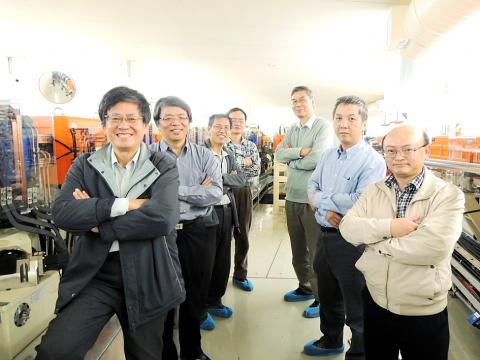
Photo: Tang Chia-ling, Taipei Times
The synchrotron, which produces a sustained beam of electromagnetic waves from infrared, ultraviolet, X-ray and visible light wavelengths, has a beam that is 1 trillion times brighter than that from a traditional X-ray tube, Department of Radiation director Felix Gwo (果尚志) said. The facility can reveal the minute and complex structures that make up matter.
The light it generates is 1 million times brighter than sunlight, Gwo said.
Gwo said that in three weeks of trial runs the team managed to ramp the accelerator up from 150 million eV to 3 billion eV.
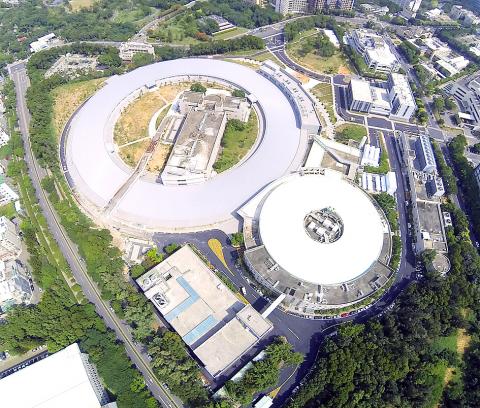
Photo courtesy of the National Synchrotron Radiation Research Center
Gwo said the time taken to achieve the increase had set a world record.
Synchrotrons elsewhere have been used to detect organic matter in fossils and in Australia revealed a rare self-portrait of painter Arthur Streeton under layers of white lead paint.
At the ceremony, President Ma Ying-jeou (馬英九) said the new synchrotron could be used in biomedical and nanotechnology research, adding that the facility would allow the nation’s technology industry to gain an edge over competitors, as it provides a research tool for numerous fields, such as physics, chemistry, geology and archeology.
Gwo said the project is the largest scientific experiment in Taiwan’s history.
Gwo said that while Australia’s synchrotron was bought, Taiwan had built its own, calling the feat another “Taiwanese miracle.”
The first ever Nobel Prize in physics was given to Wilhelm Roentgen in 1901 for his work to describe X-rays and work to unravel the secrets of DNA was done with X-rays, Chen said. Even in recent times, the physics prize has been awarded for important discoveries using X-rays, so it is possible that the synchrotron could be the catalyst for the next Taiwanese Nobel laureate.
“Just as the best car only shines on the racetrack with the best driver, the best synchrotron needs the best scientists,” Chen said, adding that Taiwan’s hopes for a Nobel Prize are good if a worthy subject is the focus of study.
The facility is to have 48 stations where experiments can be performed, though only five would be available this year, Chen said, adding that by next year the center will be available for use by scientists from around the world.
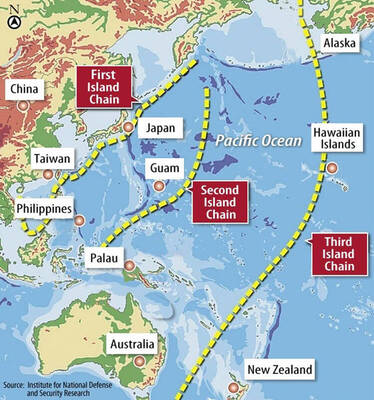
The US government has signed defense cooperation agreements with Japan and the Philippines to boost the deterrence capabilities of countries in the first island chain, a report by the National Security Bureau (NSB) showed. The main countries on the first island chain include the two nations and Taiwan. The bureau is to present the report at a meeting of the legislature’s Foreign Affairs and National Defense Committee tomorrow. The US military has deployed Typhon missile systems to Japan’s Yamaguchi Prefecture and Zambales province in the Philippines during their joint military exercises. It has also installed NMESIS anti-ship systems in Japan’s Okinawa

‘WIN-WIN’: The Philippines, and central and eastern European countries are important potential drone cooperation partners, Minister of Foreign Affairs Lin Chia-lung said Minister of Foreign Affairs Lin Chia-lung (林佳龍) in an interview published yesterday confirmed that there are joint ventures between Taiwan and Poland in the drone industry. Lin made the remark in an exclusive interview with the Chinese-language Liberty Times (the Taipei Times’ sister paper). The government-backed Taiwan Excellence Drone International Business Opportunities Alliance and the Polish Chamber of Unmanned Systems on Wednesday last week signed a memorandum of understanding in Poland to develop a “non-China” supply chain for drones and work together on key technologies. Asked if Taiwan prioritized Poland among central and eastern European countries in drone collaboration, Lin
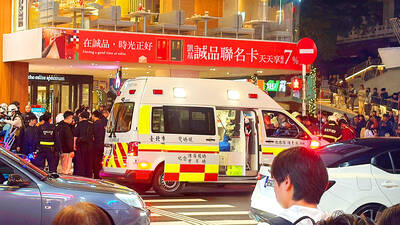
TRAGEDY STRIKES TAIPEI: The suspect died after falling off a building after he threw smoke grenades into Taipei Main Station and went on a killing spree in Zhongshan A 27-year-old suspect allegedly threw smoke grenades in Taipei Main Station and then proceeded to Zhongshan MRT Station in a random killing spree that resulted in the death of the suspect and two other civilians, and seven injured, including one in critical condition, as of press time last night. The suspect, identified as a man surnamed Chang Wen (張文), allegedly began the attack at Taipei Main Station, the Taipei Fire Department said, adding that it received a report at 5:24pm that smoke grenades had been thrown in the station. One man in his 50s was rushed to hospital after a cardiac arrest
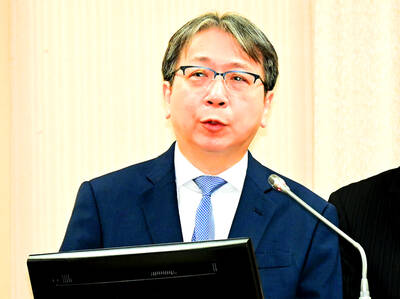
ON ALERT: Taiwan’s partners would issue warnings if China attempted to use Interpol to target Taiwanese, and the global body has mechanisms to prevent it, an official said China has stationed two to four people specializing in Taiwan affairs at its embassies in several democratic countries to monitor and harass Taiwanese, actions that the host nations would not tolerate, National Security Bureau (NSB) Director-General Tsai Ming-yen (蔡明彥) said yesterday. Tsai made the comments at a meeting of the legislature’s Foreign Affairs and National Defense Committee, which asked him and Minister of National Defense Wellington Koo (顧立雄) to report on potential conflicts in the Taiwan Strait and military preparedness. Democratic Progressive Party (DPP) Legislator Michelle Lin (林楚茵) expressed concern that Beijing has posted personnel from China’s Taiwan Affairs Office to its